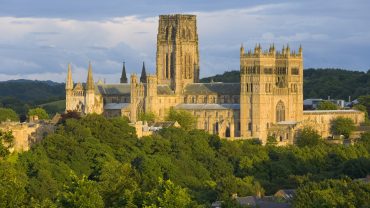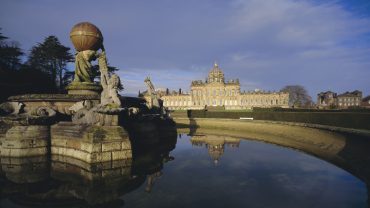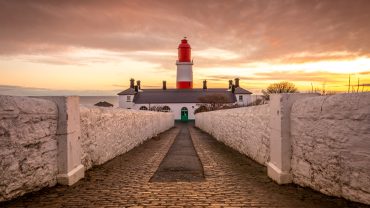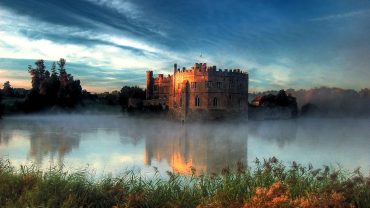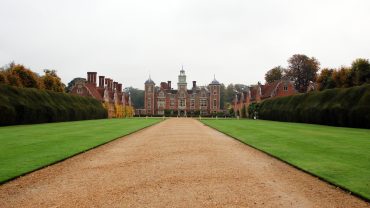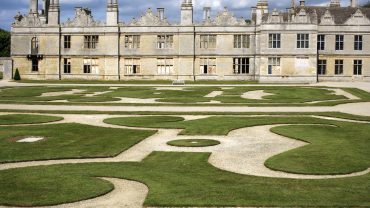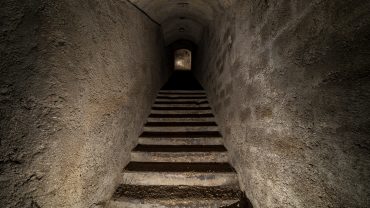The architectural gems of the West Country are a testament to the region’s rich and varied past. From windswept castles of Arthurian legend to tranquil grandeur of great cathedrals, every building tells a story – shaped by medieval monks, Georgian visionaries, or Victorian industrialists. Here, you can wander through cobbled lanes, marvel at the sweeping curves of Bath Circus, imagine the hustle and bustle of centuries-old corn exchanges, or step inside the ancient walls of medieval abbeys.
Beyond the most famous sites, the region also boasts an array of hidden treasures. These are the West Country’s architectural gems, buildings that not only reflect the region’s past but also help shape its modern identity.
In this article, we’ll look at some of the architectural styles of the West Country as well as some of the grandest West Country historic houses. We’ll also throw in a few hidden gems you may have to venture slightly off the beaten path to visit…
The Architectural Styles of the West Country

The stunning sixteenth century Sherborne Castle in Dorset (Credit: rest via Getty Images)
From 5,000 year-old stone circles to Brutalist car parks from the 1970s, the architectural landscape of the West Country represents centuries of astonishing history, stylistic trends and distinctive local character.
From imposing Norman castles and soaring medieval cathedrals to elegant Georgian crescents and Victorian Gothic revival, West Country architecture mirrors the nation’s architectural evolution. In more recent times, modern and postmodern designs have joined the landscape, ensuring the towns and cities of the west of England remain vibrant and relevant.
Yet, the West Country also boasts unique features which set it apart. The widespread use of local materials – including honey-coloured Bath stone, rich red sandstone, and cob (an ancient mix of water, straw and heavy clay-based soil) – gives many buildings a distinct regional character. Picturesque vernacular cottages, ancient abbeys, and dramatic castles further distinguish the area. While its architectural heritage closely parallels the rest of the country, these local touches and the adaptation of national styles to the West Country’s landscape make its built environment unmistakably its own.
West Country Historic Houses

Forde Abbey in Dorset, a true West Country gem (Credit: acceleratorhams via Getty Images)
The West and Southwest of England is home to some of Britain’s most beautiful and historic houses, each reflecting centuries of architectural evolution. From grand Tudor manor houses to romantic Gothic revival and elegant Georgian facades, these estates showcase a remarkable variety of styles and craftsmanship dating back centuries.
Many remain privately owned – often by the families that first built them – and others offer visitors a glimpse into the stunning interiors and picturesque gardens. Here are just a few examples of historic houses in the West Country.
Athelhampton House, Dorchester
One of England’s most impressive Tudor manor houses, Athelhampton, near Dorchester in Dorset, is renowned for its stunning Great Hall built in 1485 with an original hammer-beam roof and intricate stained glass. Expanded in the sixteenth century with its angled West Wing, the house blends medieval and Tudor features, including hidden priest holes, heraldic stained glass and elegant stonework, as well as stunning gardens laid out in the 1890s by Inigo Thomas.
Deans Court, Wimborne
Deans Court in Wimborne, Dorset, is a remarkable historic house with origins dating back to the eighth century, making it one of the oldest continuously inhabited homes in England. Once part of a Saxon monastery, it evolved over the centuries with Georgian red-brick facades, sixteenth century stained glass and later Victorian alterations. Still home to the Hanham family after nearly five centuries – just the second owners in its 1,300-year history – Deans Court is a stunning example of early West Country architecture.
Sherborne Castle, Sherborne
Sherborne Castle is a striking Tudor mansion built by Sir Walter Raleigh in 1594, later expanded by Sir John Digby in the early seventeenth century. The interiors reflect over four centuries of decorative styles, from Tudor to Georgian elegance, and the castle is surrounded by sweeping gardens designed by Capability Brown. Today, Sherborne Castle remains the home of the Wingfield Digby family and a showcase of English architectural heritage.
Corsham Court, Wiltshire
Corsham Court in Wiltshire is a magnificent Elizabethan mansion built in 1582 for Thomas Smythe, later transformed by renowned architects including Capability Brown and John Nash. The house is celebrated for its grand state rooms, impressive art collection, and striking architectural blend of Elizabethan, Palladian, and Gothic Revival styles. It was bought by Sir Paul Methuen in 1745, whose family still live there.
The Best West Country Architectural Gems

Tyntesfield House, Somerset (Credit: Mike_Boyland via Getty Images)
The sheer variety of architectural gems in the West Country means that everyone’s list of favourites will be different. Some may be drawn to ancient marvels such as Wells Cathedral or the legendary ruins of Tintagel, while others favour the refined Georgian crescents of Bath, or the Victorian grandeur of Tyntesfield. Whether you love medieval abbeys, picturesque manor houses, or striking modern designs, the West Country’s rich architectural range offers something for everyone. Here’s our top picks of West Country architectural gems.
Tintagel Old Post Office, Cornwall

Tintagel Old Post Office, Cornwall (Credit: sergioboccardo via Getty Images)
Built around 1380, Tintagel Old Post Office is a remarkable stone building – technically a traditional Cornish longhouse – originally built as a medieval farmhouse before evolving into a manor house and, in the nineteenth century, serving as the village’s post office. Its wonky slate roof and slightly ramshackle appearance make it one of the most distinctive historic houses in the West Country. Saved from demolition in 1895, it’s a rare and charming example of the region’s medieval domestic architecture.
Wells Cathedral, Somerset

Wells Cathedral, Somerset (Credit: Franz Marc Frei via Getty Images)
Wells Cathedral is celebrated as perhaps the first English cathedral built entirely in the new Gothic style, setting a precedent for ecclesiastical architecture across the country. Its iconic West Front, adorned with three hundred sculpted medieval statues, and the unique fourteenth century ‘scissor arches’ supporting the central tower, make it instantly recognisable. Inside, highlights include the magnificent Jesse Window – one of Europe’s finest examples of medieval stained glass – and the historic Wells Clock. Described as ‘unquestionably one of the most beautiful and poetic of English cathedrals,’ Wells’ pioneering design and exquisite craftsmanship make it an icon of West Country architecture.
Restormel Castle, Cornwall

Restormel Castle, Cornwall (Credit: Dr Juergen Bochynek via Getty Images)
Restormel Castle, near Lostwithiel in Cornwall, is one of England’s best-preserved examples of a circular shell keep. Originally built as a Norman motte-and-bailey castle around 1100, it was transformed in the thirteenth century into a luxurious residence for the Earls of Cornwall, with rooms arranged against the perfectly circular walls. As West Country historic houses go, it remains one of the most ingenious domestic buildings in the region. It fell into disrepair in the first half of the fourteenth century, was then extensively restored by Edward, the Black Prince, in the 1350s and 1360s, but after he died in 1376 it was all but forgotten. Within two hundred years it was ruined, with much of the original wood and stone stolen. Today, thanks in part to English Heritage who maintain the castle, it’s a popular tourist attraction.
The Circus, Bath

The Circus, Bath (Credit: georgeclerk via Getty Images)
When most people think of Bath, they think of The Circus. It’s a masterpiece of Georgian architecture, designed by John Wood the Elder and completed by his son, John Wood the Younger, between 1754 and 1768. It’s inspired by classical Roman amphitheatres and ancient British monuments like Stonehenge, and features three curved terraces forming a perfect circle. Its unique design and decorative stone acorns referencing druidic lore make it one of the pre-eminent examples of West Country architecture, and together with the nearby Royal Crescent, defines Bath’s elegant eighteenth century cityscape.
Lacock Abbey, Wiltshire

Lacock Abbey, Wiltshire (Credit: dbstockphoto via Getty Images)
Lacock Abbey, a remarkable blend of architectural styles of the West Country and beyond, including medieval, Tudor, and Gothic Revival, was founded in 1232 by Ela, Countess of Salisbury, as an Augustinian nunnery. After the Dissolution of the Monasteries in the sixteenth century, the abbey was transformed into a Tudor country house by Sir William Sharington, who preserved the original cloisters and added distinctive features including the octagonal tower. The abbey is also famous as the home of William Henry Fox Talbot, a pioneer of photography, who created the world’s earliest surviving photographic negative there in 1835.
The Corn Exchange, Bristol

The Corn Exchange, Bristol (Credit: AmandaLewis via Getty Images)
A true architectural gem of the West Country, the Bristol Corn Exchange is a striking example of Georgian Palladian architecture, designed by John Wood the Elder and completed in 1743. Its grand façade on Corn Street features Corinthian columns, intricate carvings by Thomas Paty, and a prominent Royal Coat of Arms. Originally built as a hub for merchants trading corn and other goods, it’s believed to be the last surviving eighteenth century exchange building of its kind in England. One of the building’s most distinctive features is the set of four bronze “nails” outside, flat-topped trading tables dating from the late Elizabethan to early Stuart periods, believed to be the origin of the phrase “pay on the nail”. Another unique highlight is the dual-minute-hand clock above the entrance, installed in 1822 to show both Bristol local time and Greenwich Mean Time – a reminder of the city’s resistance to standardised time during the railway era.
St. Edward’s Church, Stow-on-the-Wold

St. Edward’s Church, Stow-on-the-Wold (Credit: by Andrea Pucci via Getty Images)
St Edward’s in the Cotswolds market town of Stow-on-the-Wold is a beautiful medieval church with origins dating back to the eleventh or twelfth century, though most of the current structure was built between the thirteenth and fifteenth centuries. Its most iconic feature is the north door, framed on either side by ancient yew trees, creating a magical, almost otherworldly entrance. This enchanting doorway is said by some to have inspired J.R.R. Tolkien’s Doors of Durin in The Lord of the Rings, although it may be no more than a modern local legend. The church’s blend of Norman and Perpendicular Gothic styles, along with its fascinating history and picturesque setting, make it a true gem of West Country architecture.
Vicars Close, Somerset

Vicars Close, Somerset (Credit: clubfoto via Getty Images)
Vicars Close in Wells is believed to be the oldest continuously inhabited residential street in Europe, with its original buildings still intact since the 1360s. Built to house the Vicars Choral of Wells Cathedral, the street’s medieval cottages, chapel, and hall at the south end over an arched gate have remained largely unchanged for over 650 years and are still used for their original purpose. Although there were originally forty-four houses, today just twenty-seven remain. Its cobbled street features a clever optical illusion – the width tapers, making it appear longer from the cathedral end, and twentieth century historian John Julius Norwich called it ‘the rarest of survivals, a planned street of the mid-fourteenth century.’


